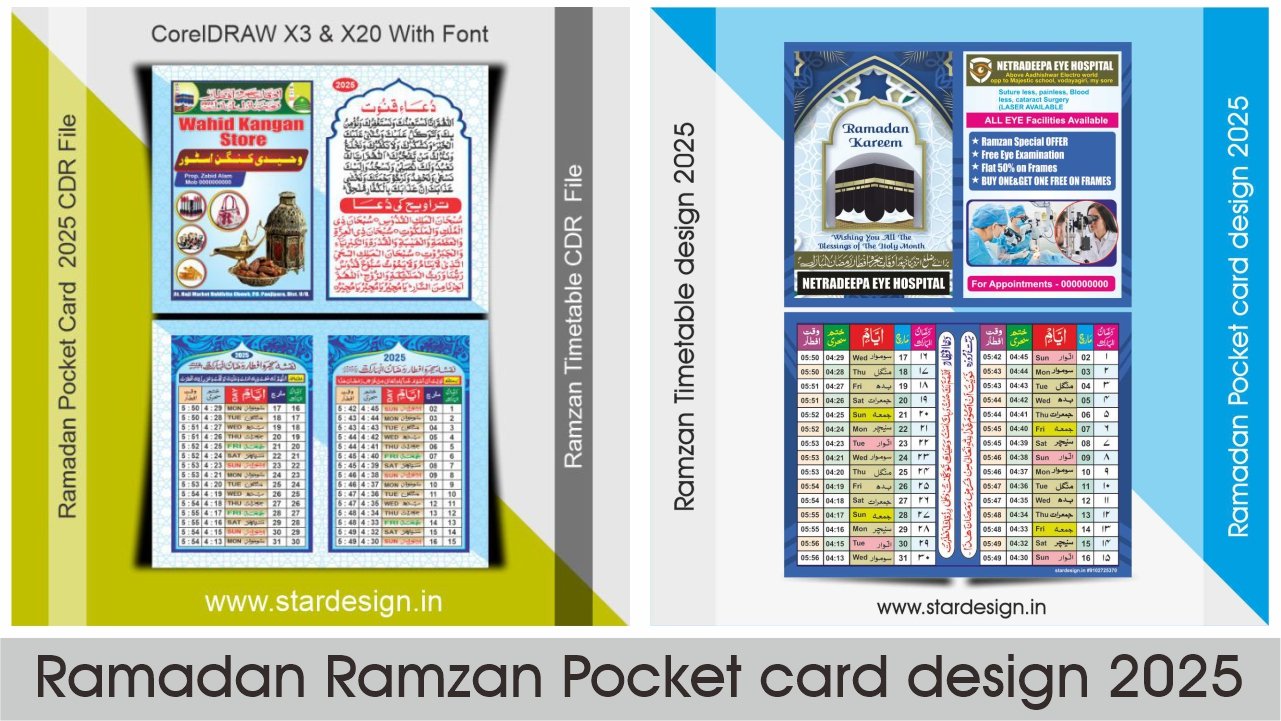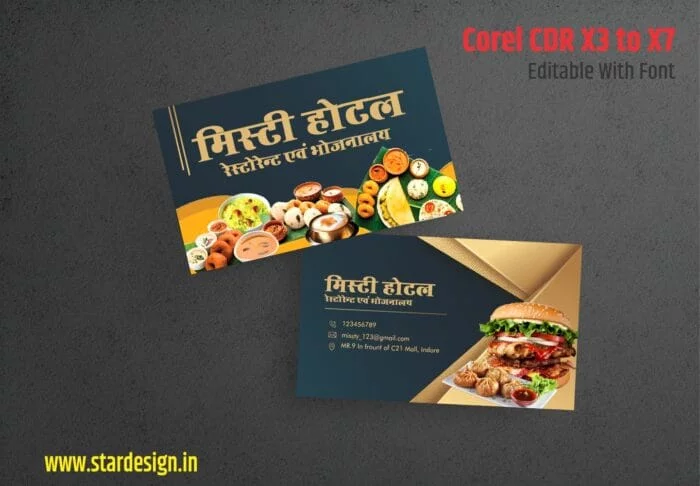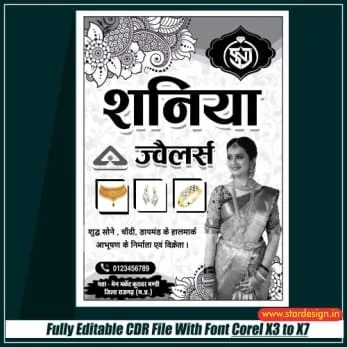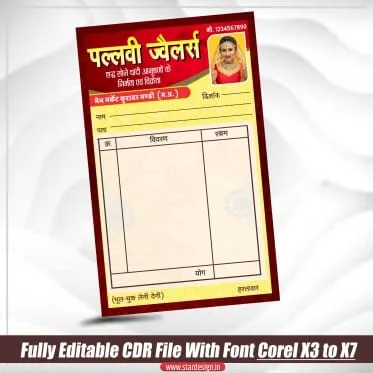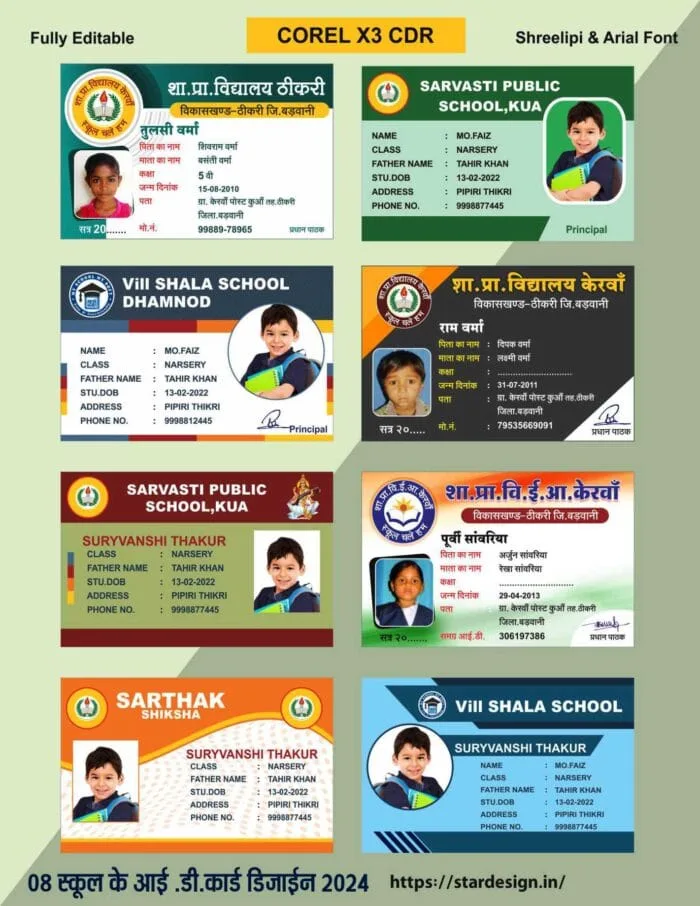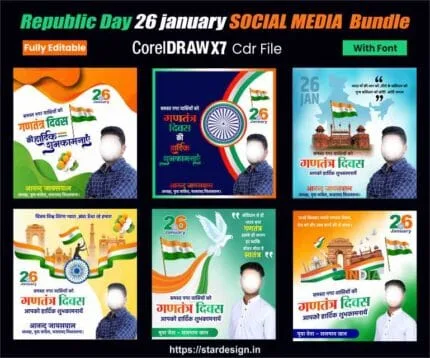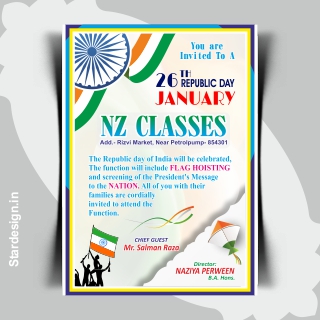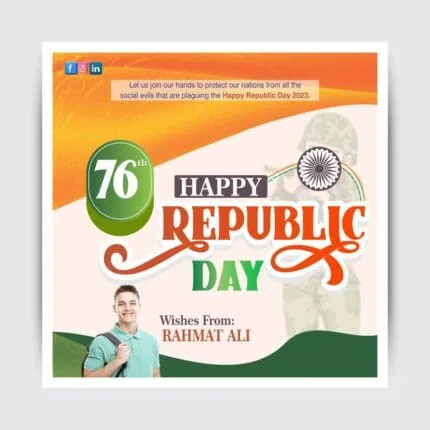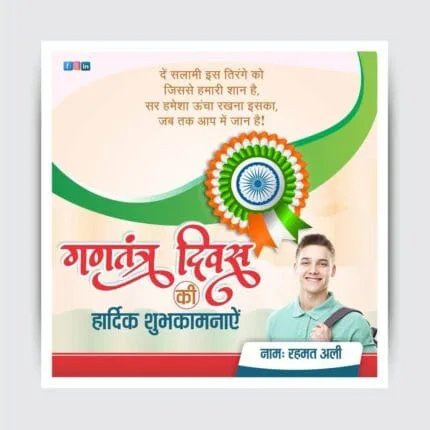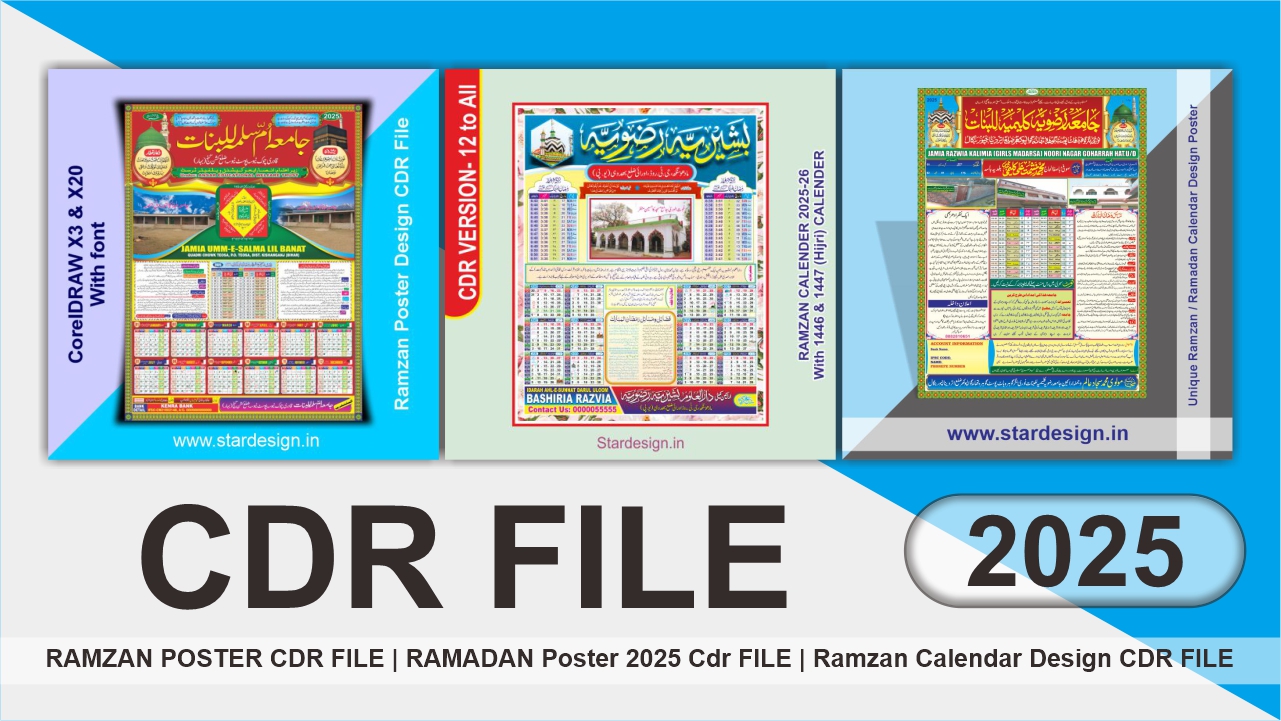Introduction to Ramadan Posters
Ramadan posters serve as vibrant and meaningful expressions of faith during the holy month of Ramadan, which is observed by millions of Muslims worldwide. These posters are designed not only to reflect the spiritual essence of Ramadan but also to convey messages of community, tradition, and cultural significance. The visual appeal of these posters often incorporates traditional Islamic art elements, helping to engage individuals and families in their observance of the month.
The significance of Ramadan posters extends beyond mere decoration; they play a crucial role in fostering a sense of unity and belonging within communities. In many regions, these posters are prominently displayed in homes, mosques, and public spaces, inviting conversations about faith and shared values. By incorporating elements that symbolize fasting, prayer, and charity, these posters reflect the core principles of Ramadan and encourage positive participation in communal activities.
Throughout various cultures, the design of Ramadan posters can differ widely, incorporating local aesthetics and traditions. From intricate calligraphy to bold graphics, the diversity in styles showcases the unique ways in which communities celebrate their faith. This artistic variety not only enriches the spiritual atmosphere during Ramadan but also educates individuals about different cultural practices and interpretations of the holiday.
As we approach Ramadan 2025, the importance of creating and sharing these posters remains paramount. They offer an opportunity to reflect on the values of compassion, benevolence, and self-discipline that characterize this holy month. By embracing creativity in poster design, communities can further awaken the spirit of Ramadan, encouraging participation in observances and strengthening connections among individuals and families.
Trends in Graphic Design for Ramadan 2025
As Ramadan approaches in 2025, graphic design will continue to evolve, showcasing a blend of tradition and modernity in poster designs. This year’s trends focus on vibrant color palettes, innovative typography, and culturally resonant imagery. Designers are moving towards earthy tones combined with bold accents, creating a visual representation of the Ramadan spirit. Colors such as deep greens, lavish golds, and rich blues evoke a sense of tranquility and spirituality, which aligns well with the theme of the holy month.
Typography is also experiencing a renaissance, with a shift towards elegant and modern typefaces that maintain readability while embodying the festive spirit. This year, designers are incorporating more handwritten or calligraphic fonts to add a personal touch, reflecting the warmth and community aspect of Ramadan. The choice of typography not only enhances the aesthetic appeal but also communicates a deep respect for the cultural heritage associated with this significant period.
Imagery remains pivotal in conveying the essence of Ramadan. Trends for 2025 emphasize using illustration over stock photography, allowing for a unique and artistic representation of traditional symbols like crescent moons, mosques, and lanterns. These illustrations often combine contemporary styles with traditional motifs, making the designs relatable and visually striking. Cultural factors play a crucial role in these trends, as designers strive to create content that resonates with diverse audiences while honoring the customs and values of the month. This approach ensures that Ramadan posters remain relevant and impactful, fostering a deeper connection with viewers and enhancing the overall experience of the holy month.
Key Elements of a Successful Ramadan Poster
When designing a Ramadan poster, several key elements play a crucial role in ensuring that the final product is both visually appealing and effective in conveying the intended message. Firstly, thematic colors are fundamental in shaping the overall ambiance of the poster. Traditionally, colors such as green, gold, and blue are associated with Ramadan. Green, symbolizing peace and tranquility, is particularly prominent, while gold adds an air of elegance. Using a harmonious color palette not only enhances visual appeal but also contributes to the poster’s thematic unity.
Another essential component is the use of symbolism. Islamic art is rich in motifs and symbols that can evoke the spirit of Ramadan. Crescents, stars, and lanterns are popular choices that communicate the essence of the holy month. Integrating these symbols into the design can create a direct connection with the audience. Furthermore, it is crucial to ensure that the symbolism used resonates with the cultural context of the target audience, thereby reinforcing the message of community and spirituality.
Text placement is equally significant in creating a successful Ramadan poster. The poster should effectively balance textual information and imagery. Key messages, such as greetings or event details, should be positioned prominently to attract attention, while ensuring readability. Consideration should also be given to font style and size; a blend of elegant and legible fonts will help in maintaining the aesthetic appeal of the design. By spacing the text appropriately and using contrast effectively, designers can lead the viewer’s eye to the most important information without overwhelming them.
Incorporating these key elements—theme colors, symbolism, and text placement—can significantly enhance the effectiveness of a Ramadan poster. When executed thoughtfully, these components work together harmoniously to create an impactful and celebratory design that resonates with the intended audience.
Tools and Software for Designing Ramadan Posters
Creating visually appealing and meaningful Ramadan posters can significantly benefit from the use of specialized tools and software tailored for graphic design. One of the most widely used programs in this realm is CorelDRAW, which supports the use of CDR files. CorelDRAW offers a comprehensive suite of features that aid designers in producing high-quality visuals. Its vector graphic capabilities allow for scalability without loss of quality, essential for poster designs that may shift in size depending on display requirements.
In addition to vector graphics, CorelDRAW provides a variety of templates, enabling designers to jump-start their projects with professional layouts. With an extensive library of design elements, including Islamic motifs and typography, users can easily find resources suitable for Ramadan themes. The software also includes powerful tools for color management, enabling designers to implement rich, vibrant colors that resonate with the celebratory spirit of Ramadan.
Beyond CorelDRAW, other graphic design software also offers features conducive to creating impressive Ramadan posters. Adobe Illustrator is another popular option, providing similar vector capabilities and extensive customization facilities. Furthermore, platforms like Canva have emerged, allowing users with varying levels of expertise to design visually appealing posters using a user-friendly interface enriched with pre-designed templates and stock images themed around Ramadan.
For those seeking an alternative to traditional desktop applications, online tools such as Crello and Snappa present accessible options that can be utilized directly from web browsers. Despite their simplicity, these tools often include essential features like drag-and-drop capabilities and built-in libraries of graphics and fonts that cater to all aspects of poster design, from concept to execution.
Ultimately, the choice of tools and software will depend on the designer’s familiarity and requirements, but each option presents unique advantages that can enhance the creativity and effectiveness of Ramadan poster designs.
Step-by-Step Guide to Creating a Ramadan Poster in CDR
Creating a Ramadan poster using CorelDRAW (CDR) can be an enriching experience, allowing designers to express their creativity while honoring the significance of this holy month. To begin, open CorelDRAW and set up your document. Select a suitable size for your poster, typically A3 or A2 formats work well for display purposes. After selecting your dimensions, ensure that the resolution is set to a minimum of 300 DPI to maintain quality. This step is crucial for print media.
Next, familiarize yourself with the design tools available in CorelDRAW. Use the Rectangle Tool to create a background layer, choosing colors or gradients that resonate with the ethos of Ramadan, such as deep blues, rich golds, or soothing greens. Overlaying a symbolic design element, like a crescent moon or lantern, can further enhance your poster’s theme. The Shape Tool allows for the creation of custom shapes that can serve as decorative elements.
Once your basic layout is established, utilize the layering feature to organize different elements of your poster. Group similar items together, such as text and images. This not only streamlines your workflow but also allows for easier adjustments later. When it comes to text, selecting appropriate fonts is vital. Look for styles that are both legible and reflective of the cultural aesthetics associated with Ramadan, perhaps integrating Arabic calligraphy for an authentic touch.
Adding visual effects can bring your poster to life. CorelDRAW provides various options for shadows, glows, and textures, which can be employed to add depth to your elements. Finalize your design by reviewing all layers and elements for consistency, ensuring that the overall look is harmonious. Finally, export your completed poster as a high-resolution PDF or JPEG file suitable for print, ensuring you preserve the integrity of your design.
Incorporating Calligraphy and Traditional Motifs
Arabic calligraphy and traditional Islamic motifs are vital components in the design of Ramadan posters, enriching them with cultural significance and aesthetic value. Calligraphy, often regarded as a sacred art form, allows designers to convey messages in a visually captivating manner. The intricate curves and elegant strokes of Arabic script can embody the spirituality of the holy month while serving as a focal point for the viewer. By choosing specific verses from the Quran or renowned phrases that resonate with the spirit of Ramadan, designers can create pieces that not only attract attention but also inspire reflection.
Incorporating traditional Islamic motifs further enhances the visual appeal of Ramadan posters. These motifs can provide a sense of identity and connect viewers with the rich heritage of Islamic art. Patterns often draw inspiration from geometric designs, floral elements, and tessellations, which can create a harmonious backdrop for calligraphy. When combined thoughtfully, these elements can offer a well-rounded visual narrative, representing themes such as unity, peace, and celebration that are central to Ramadan.
To achieve the best results, sourcing high-quality fonts and digital resources is crucial. Numerous online platforms offer extensive libraries of Arabic fonts that cater to various design aesthetics. It is advisable to seek out premium resources that ensure legibility and artistic flair. Additionally, exploring digital marketplaces can yield traditional motifs and patterns available in CDR file formats, allowing easy integration into design applications.
Ultimately, merging calligraphy with traditional Islamic motifs in Ramadan poster designs enhances not only their artistic merit but also their cultural relevance. As designers strive to communicate the essence of Ramadan, these elements serve as powerful tools for conveying messages deeply rooted in faith and tradition.
Showcasing Cultural Diversity Through Design
Designers play a crucial role in representing the cultural diversity within the Muslim community, particularly during significant occasions like Ramadan. By showcasing various traditions and practices through thoughtful design, Ramadan posters can serve as a visual celebration of this diversity. To effectively highlight these cultural nuances, designers can draw inspiration from various countries and their distinct practices during Ramadan.
For instance, designers can incorporate specific symbols that are prevalent in different regions, such as the crescent moon and stars, which are commonly recognized across many Muslim cultures. However, the way these symbols are rendered can vary significantly. In Moroccan designs, intricate geometric patterns and vibrant colors can embody the essence of the region’s rich history. Meanwhile, South Asian designs often feature detailed calligraphy along with motifs that resonate with local customs, such as lanterns and henna patterns.
Color palettes also play a vital role in conveying the distinct cultural identity associated with Ramadan. Warm golds, deep blues, and rich greens are popular choices in Middle Eastern designs, symbolizing prosperity and spirituality. In contrast, Southeast Asian designs may lean towards softer pastels that reflect the celebratory and communal aspects of the holy month, highlighting the importance of family gatherings and traditional meals. Designers can benefit from employing a mix of these color schemes to engage their audience and enhance visual storytelling.
Typography is another significant element that can help depict cultural diversity. Utilizing fonts that reflect the calligraphic styles unique to various regions can enhance the overall aesthetics of a Ramadan poster. By blending these unique elements—symbols, colors, and typography—designers can craft Ramadan posters that not only inform but also celebrate the rich tapestry of traditions observed during this holy month, effectively fostering a sense of unity among diverse communities.
Best Practices for Printing and Sharing Your Ramadan Poster
Creating a vibrant and professional Ramadan poster requires attention to detail in various aspects of design preparation. To ensure both print and digital versions of your poster achieve optimal quality, it is essential to adhere to industry best practices concerning file formats, resolution, color profiles, and dimensions.
When preparing your poster for print, it is advisable to use a resolution of at least 300 DPI (dots per inch). This high resolution guarantees that the images and text appear sharp and clear when printed. Conversely, for digital sharing, a resolution of 72 DPI is often sufficient, keeping the file size manageable without compromising visual quality.
Choosing the right file format is crucial as well. For print, files saved in formats like TIFF or PDF are recommended due to their ability to preserve high-quality imagery and support layers. On the other hand, JPEG and PNG formats work well for digital sharing, as they provide a balance between quality and file size. Ensuring that the poster is saved in the correct format will enhance the overall aesthetics and clarity of the design.
Color profiles play a vital role in ensuring the colors displayed in the design translate accurately from screen to print. CMYK (Cyan, Magenta, Yellow, Black) is the standard color model used in printing, whereas RGB (Red, Green, Blue) is optimized for digital displays. It is important to design your poster in the appropriate color profile based on its end use to maintain color fidelity.
Lastly, dimensions of your poster should be thoughtfully chosen. Standard poster sizes like 24×36 inches are ideal for print, while dimensions suited for social media platforms, such as 1080×1080 pixels for Instagram, cater to digital audiences. This strategic consideration helps ensure that your Ramadan poster is visually engaging and effectively communicates its message across different platforms.
Conclusion and Call to Action
As we have explored throughout this blog post, the importance of celebrating Ramadan through creative poster designs cannot be overstated. The ideas presented not only highlight the beauty and spiritual significance of this holy month but also serve as a source of inspiration for designers seeking to convey meaningful messages. By utilizing CDR files and various design elements, one can easily create posters that captivate and engage audiences, reflecting the essence of Ramadan.
The fusion of tradition and modern aesthetics provides a platform for artists to express their interpretations of this cherished time. Whether through typography, imagery, or color schemes, each poster becomes a unique representation of individual creativity. As we approach Ramadan 2025, it is essential to encourage the design community to innovate and experiment with new techniques. This can lead to the emergence of fresh concepts that resonate with a broader audience while respecting the traditions inherent to Ramadan.
We invite you to start your journey in creating captivating Ramadan posters. Explore new software, try innovative design tools, and share your work with fellow designers. Engaging with the community by showcasing your designs not only boosts your visibility but also inspires others to join in this celebratory creative process. Collaborating with peers can foster an enriching exchange of ideas, contributing to a greater cultural appreciation.
Together, let us celebrate the spirit of Ramadan through imaginative poster designs that inspire, educate, and bring people together. Start designing today and share your creations to enhance the collective celebration of this significant month. Your contribution can make a meaningful difference!
food hotel visiting card design
₹20.00_JEWELLERY SHOP CARRY BAG
₹25.00_jewellery shop malti colour bill book
₹20.0008 Id Card design Bundle
₹60.0010 best premium multicolor carry bag design
Original price was: ₹500.00.₹100.00Current price is: ₹100.00.
food hotel visiting card design
₹20.00_JEWELLERY SHOP CARRY BAG
₹25.00_jewellery shop malti colour bill book
₹20.0008 Id Card design Bundle
₹60.0010 best premium multicolor carry bag design
Original price was: ₹500.00.₹100.00Current price is: ₹100.00.
This week’s popular products
- Original price was: ₹99.00.₹19.00Current price is: ₹19.00.
Bengali Akshaya Tritiya (অক্ষয় তৃতীয়া) Banner PSD_ON
- Original price was: ₹99.00.₹29.00Current price is: ₹29.00.
Jewellery Shop Offer Banner PSD-ON
- Original price was: ₹149.00.₹49.00Current price is: ₹49.00.
ISLAMIC JALSHA Bengali Islamic Jalsha PSD_ON
Staff picks
Staff picks
Our latest and greatest
food hotel visiting card design
₹20.00_JEWELLERY SHOP CARRY BAG
₹25.00_jewellery shop malti colour bill book
₹20.0008 Id Card design Bundle
₹60.0010 best premium multicolor carry bag design
Original price was: ₹500.00.₹100.00Current price is: ₹100.00.
Our latest and greatest
food hotel visiting card design
₹20.00_JEWELLERY SHOP CARRY BAG
₹25.00_jewellery shop malti colour bill book
₹20.0008 Id Card design Bundle
₹60.0010 best premium multicolor carry bag design
Original price was: ₹500.00.₹100.00Current price is: ₹100.00.
Our latest and greatest
food hotel visiting card design
₹20.00_JEWELLERY SHOP CARRY BAG
₹25.00_jewellery shop malti colour bill book
₹20.0008 Id Card design Bundle
₹60.0010 best premium multicolor carry bag design
Original price was: ₹500.00.₹100.00Current price is: ₹100.00.
Our latest and greatest
food hotel visiting card design
₹20.00_JEWELLERY SHOP CARRY BAG
₹25.00_jewellery shop malti colour bill book
₹20.0008 Id Card design Bundle
₹60.0010 best premium multicolor carry bag design
Original price was: ₹500.00.₹100.00Current price is: ₹100.00.
Our latest and greatest
food hotel visiting card design
₹20.00_JEWELLERY SHOP CARRY BAG
₹25.00_jewellery shop malti colour bill book
₹20.0008 Id Card design Bundle
₹60.0010 best premium multicolor carry bag design
Original price was: ₹500.00.₹100.00Current price is: ₹100.00.
Staff picks
Our latest and greatest
food hotel visiting card design
₹20.00_JEWELLERY SHOP CARRY BAG
₹25.00_jewellery shop malti colour bill book
₹20.0008 Id Card design Bundle
₹60.0010 best premium multicolor carry bag design
Original price was: ₹500.00.₹100.00Current price is: ₹100.00.
- Uncategorised244 products
- AGARBATTI BOX DESIGN1 product
- BARAT CARD12 products
- Bill Book63 products
- BIRTHDAY CARD24 products
- BOOK DESIGN3 products
- BUNDLES1 product
- Calender26 products
- CAR POSTER38 products
- CARRY BAG DESIGN69 products
- CERTIFICATE DESIGN12 products
- CHUNAW ITEMS3 products
- CLIPARTS10 products
- CRICKET DESIGN2 products
- DIGITAL CARD52 products
- DIGITAL WEDDING CARD33 products
- DIWALI2 products
- EID MILADUN NABI10 products
- Flex Banner920 products
- FLOWER CORNER2 products
- FLYER57 products
- GANDHI JAYANTI1 product
- GANESH CHATURTHI2 products
- Graphic Design30 products
- Hand Bill19 products
- HINDU WEDDING CARD DESIGN187 products
- ID CARD DESIGN60 products
- INDIAN FESTIVAL15 products
- Key Design1 product
- LABEL DESIGN5 products
- LETTER HEAD32 products
- LOGO1 product
- MAKAR SANKRANTI1 product
- MENU26 products
- MENU CARD DESIGN47 products
- MUSLIM WEDDING CARD37 products
- PACKAGE27 products
- PACKET DESIGN14 products
- PNG IMAGES1 product
- Poster124 products
- PSD FILE19 products
- RAKSHA BANDHAN1 product
- RAMADAN5 products
- RAMZAN CALENDAR25 products
- Rasid Design27 products
- SHOP OPENING CARD45 products
- SOCIAL MEDIA POST56 products
- TEACHER'S DAY2 products
- UNCATEGORIZED9 products
- Urdu Arbic Calligraphy1 product
- VECTOR FILE3 products
- Visiting Cards190 products
- Wedding Cards142 products
26 January 2025 Cdr File
Original price was: ₹50.00.₹20.00Current price is: ₹20.00.26 january invitation design 2024
₹55.0028 Latest Fency Hindu Wedding Card Design Cdr File With Fonts I Hindi Wedding Matter Package
Original price was: ₹499.00.₹199.00Current price is: ₹199.00.

